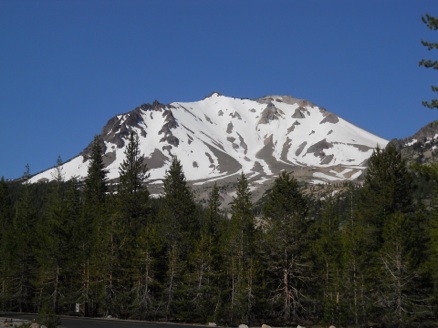Research

Information – compositional, temporal and geophysical – is stored in the crystal record of magmas. Crystals, in fact, store more different types of information than whole rock analyses because with crystals, you can examine the history of the melt that the crystal in an integrated fashion through microanalysis of zones. This is thanks to two areas that have expanded our understanding of crystals and melts greatly in the last decade. First are microanalytical techniques such as electron microprobe, ion microprobe and microdrilling of crystals to examine individual crystals and zones within crystals. Second are high-resolution isotopic analyses that can be performed via multi-collector ICP-MS and ion microprobe, which has opened new methods of geochronology such as uranium-series disequilibria of single and bulk crystal populations. These methods provide new insights into the compositional and temporal evolution of melts in all settings to tackle questions such as the residence time/differentiation rates of magma, along with geologic problems of all types that have been inaccessible until recently.
I am interested in the development of magmas in continental crust using micron-scale and high-resolution isotopic analyses. Specifically, I use uranium-series disequilibria dating, 40Ar/39Ar geochronology, in-situ microanalyses via electron microprobe, ion microprobe and laser ablation ICP-MS and major element microanalysis, along with standard whole rock analyses, to unravel the dynamic history of crystals and melts in volcanic and plutonic systems by examining both compositional and temporal information. I use these data to gain insights on the following questions that are central to our understanding of how magmatic systems develop:
-
•What is the connection between volcanic and plutonic rocks? What do each represent in the evolution of a magmatic system?
-
•What is the nature and geometry of magmatic systems? Are they ephemeral pods, long-lived complexes of interconnected sills or vats of magma?
-
•What is the relationship between the timing of crystallization and eruptive activity? Can we use crystal geochronology to help constrain future activity?
Additionally, these data can help us understand the rates of magmatism in all tectonic settings by combining geochronology and volumetric (spatial) analysis of volcanic and plutonic systems. These types of studies (e.g., Klemetti and Grunder, 2008) can help us better constrain long-standing issues such as:
-
•What is the ratio of volcanic to plutonic rocks in the crust and how does this relate to their production?
-
•What are the overall growth rates of volcanic and plutonic systems over the thousands to millions of year timescales?
-
•How does a better understanding of production rates at a volcano help us predict future activity?
These two prongs of research are highly complementary and can be applied to a wide variety of settings, in almost any tectonic setting and any age of plutonic or volcanic rock. This research is also highly scalable, where important contributions can be made using everything from a petrographic microscope to an ion microprobe (and everything in-between). These questions are some of the central problems in understanding magmatism today and I think my research can add to any department that wants to bring or be involved collaboratively with cutting-edge isotopic, microanalytical and geochronological research.

Zircon from the Kaharoa eruption of Mt. Tarawera, New Zealand
Using the methods discussed here, I have a number of ongoing and future research projects that look at (1) the production of melt in the crust; (2) the longevity of magmatic systems; (3) the source of crystals in magma and; (4) the temporal relationship between intrusions and eruptions. These projects are both domestic and international in their setting and can easily incorporate students of all levels into the research.
Melt Production and Crystal Ages in Magmas
Uranium-series (226Ra-230Th-238U) disequilibria dating exploits the decay chain of 238U to date crystals and rocks. In a petrologic context, crystal ages from young volcanic rocks can be measured to examine the interconnectedness of magmatic systems underneath active volcanoes and the direct relationship between magmas and the sources of their crystal cargo. Crystals control the evolution of magma, so an understanding of the temporal relationship between phases is vital for understanding the evolution of a magmatic system. Major and trace phases may crystallize simultaneously or at widely different times during the magma’s evolution, however these relationships are currently not well-constrained. Previous studies have looked at the crystal ages in igneous rocks using U-series methods and these studies typically focus either on major phases such as plagioclase (e.g., Cooper et al., 2001) or trace phases such as zircon (e.g., Lowenstern et al., 2001). However, few studies directly compare the U-series ages of major and trace phases in the same lavas in order examine their temporal relationship - information that is vital to modeling and predicting magmatic evolution and behavior.
To this end, I am examining the crystal ages in young silicic lavas and pumice from Tarawera, New Zealand and the Devil’s Hills/Rock Mesa, Oregon (with Dr. Kari Cooper at UC Davis). These flows range in age from ~700-2200 y B.P. (based on 14C ages) and are some of the few examples of silicic lavas flows and pumice in the world that are young enough access 226Ra-230Th disequilibria dating methods (the half-life of 226Ra is 1600 years, so rocks younger than ~5,000 years). I am comparing the crystal ages of major phases (plagioclase) using 226Ra-230Th-238U and 230Th-238U disequilibria dating via MC-ICP-MS analysis with crystal ages of trace phases (zircon) using 230Th-238U disequilibria dating via SHRIMP-RG. Results from the 1305 A.D. eruption of Tarawera show that the major and trace phases record different timescales. Zircon records a longer history of magmatic events, upwards of 250 k.y. while plagioclase records events within a few hundred years of the eruption. This suggests that rhyolite is produced by segregating rhyolite liquid with entrained zircon from a crystal mush just before eruption, followed by new crystallization. This also advocates the need to date multiple phases in the same magma in order to understand the evolution of the lavas erupted.
Additionally, I plan to examine the sources of crystals in other arc volcanoes. The 1915 eruption of Lassen Peak in California is a classic example of the production of a mixed dacite lava. Zircon can be found within the 1915 Black Dacite of Lassen Peak, however, the source of this zircon is unclear - it could be recycled from the nearby ~1100 y.b.p. Chaos Crags rhyodacite eruption. If so, this would suggest an interconnected network for the magmatic system underneath Lassen Peak and Chaos Crags. I also have an undergraduate research student (Jesslyn Starnes '11) starting a project in the Mineral King area of the Sierras Nevada, California. This is part of a Keck Consortium Research project headed by Jade Star Lackey (Pomona) and Stacy Loewy (CSU Bakersfield).
About My Research

